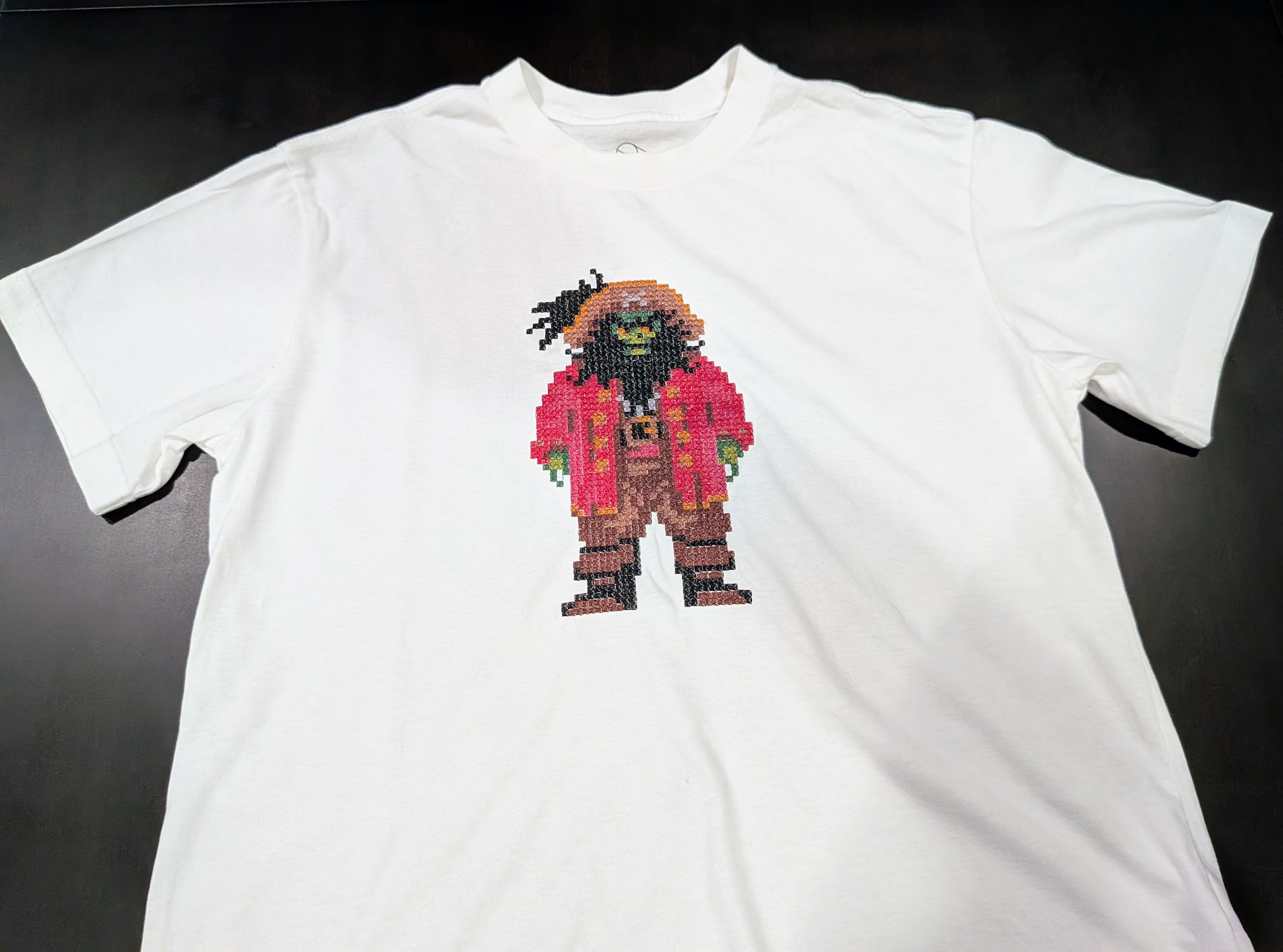
This past weekend, I had two events:
- Vintage Computer Festival West, at the Computer History Museum.
- And we hosted a party at home.
So I decided that nothing better than to embroider Le Chuck, from Monkey Island 2.
These are the steps that I followed to embroider it:
1. Grab the Sprite and simplify it
I took the sprite from The Legend of Monkey Island site.
![]() Original sprite has 13 different colors.
Original sprite has 13 different colors.
I slightly modified it so that it uses 9 colors instead of the original 13. I used GIMP to modify it.
2. Edit it with Pixem
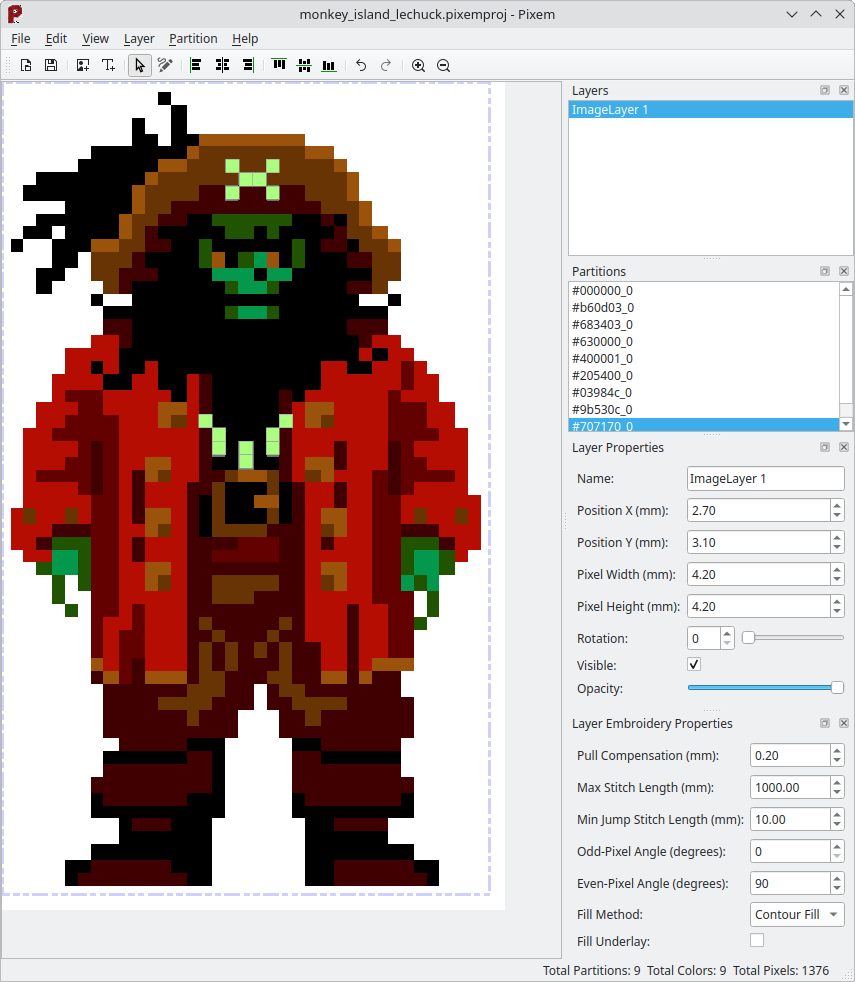 Using Pixem to define the order of the pixels, among other things.
Using Pixem to define the order of the pixels, among other things.
I created the path-of-pixels (order in which the pixels are going to be embroidered) in Pixem, my custom editor.
I also set:
- Pixel size: 4.2mm x 4.2mm
- Pull compensation: 0.2mm
- Min jump stitch length: 10mm, which in hindsight was too much. More about this in a future blog post.
And from Pixem, I exported an SVG file with Ink/Stitch metadata.
3. Validate it with Ink/Stitch
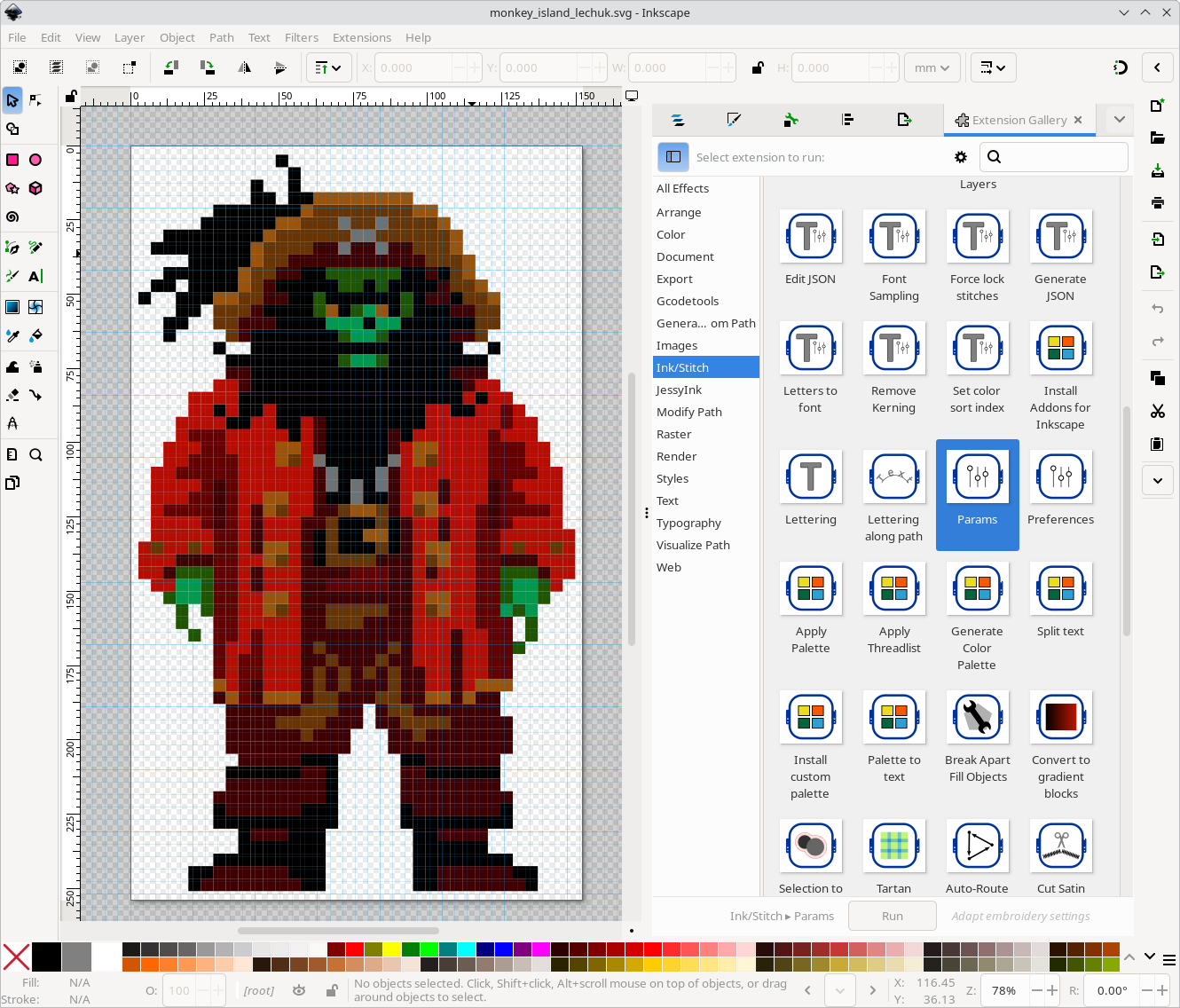 Using Inkscape + Ink/Stitch to validate and generate embroidery
files.
Using Inkscape + Ink/Stitch to validate and generate embroidery
files.
I analyzed the SVG file with Inkscape + Ink/Stitch. I checked that it looked good and I exported:
- PDF file: with the embroidery information, including a real-size of Le Chuck
- PES file: the one that my embroidery machine recognizes
4. Prepare the T-shirt
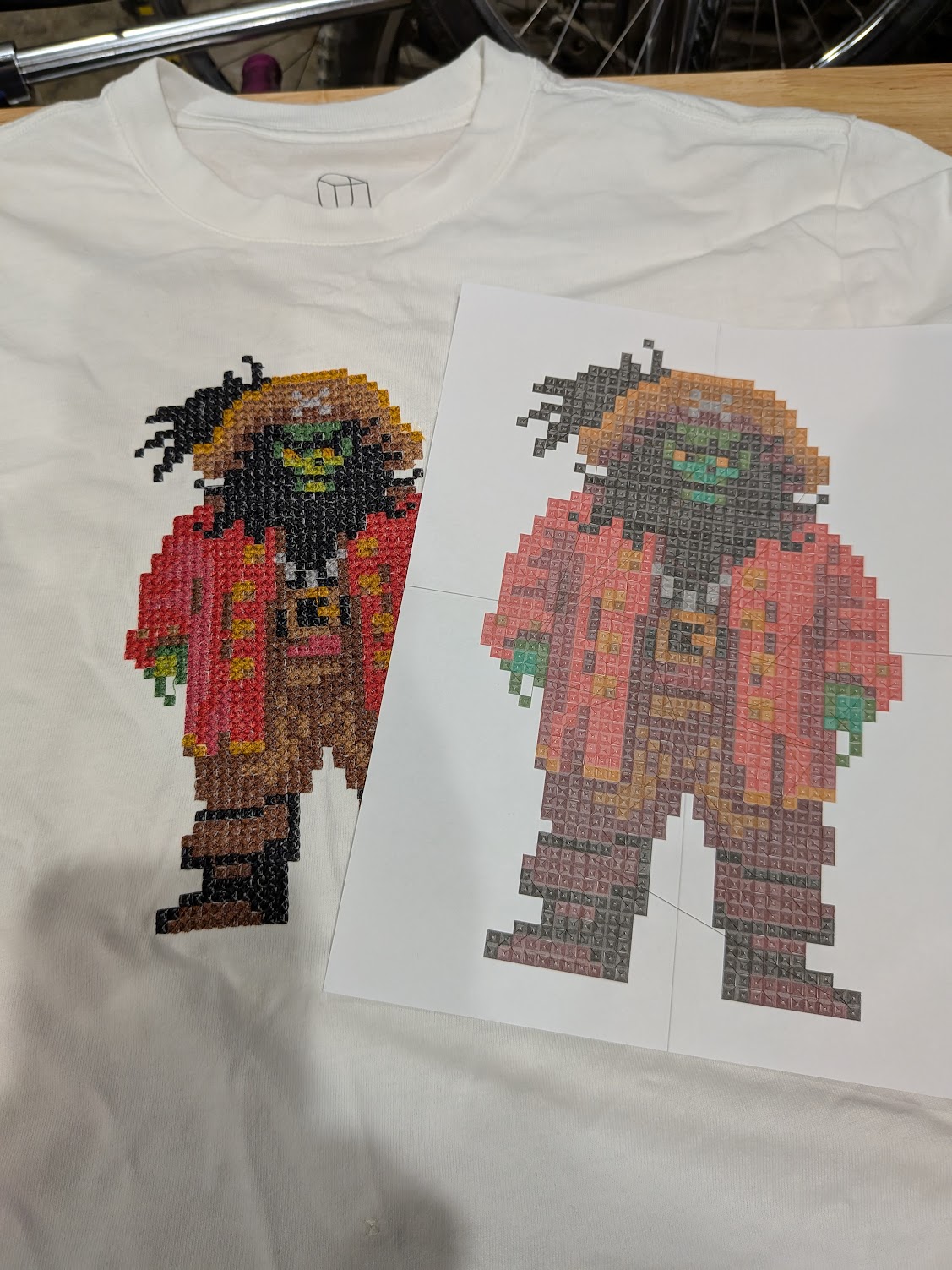
To center the hoop, I use a real-size printed version of Le Chuck.
I used the 6x10 hoop. The hoop aspect ratio and the sprite aspect ratio were almost the same one, yay!
It is recommended, when using the 6x10 hoop, to use t-pins to prevent a possible lateral movement. This time I forgot to put the pins. The good news is that I didn’t notice any “shift” in the final result.
I centered the hoop using a real-size printed version of Le Chuck.
As before, I used two layers of fusible iron no-show-mesh cut-away stabilizers. But this time I didn’t iron them “too much”. I only sprayed a tiny bit of water while ironing them. And I’m happy with the result since it was easier to cut and remove the stabilizers in the end.
I also used a [water-soluble embroidery topping][embroidery_topping] to make the pixels look better.
6. Choosing the correct color threads
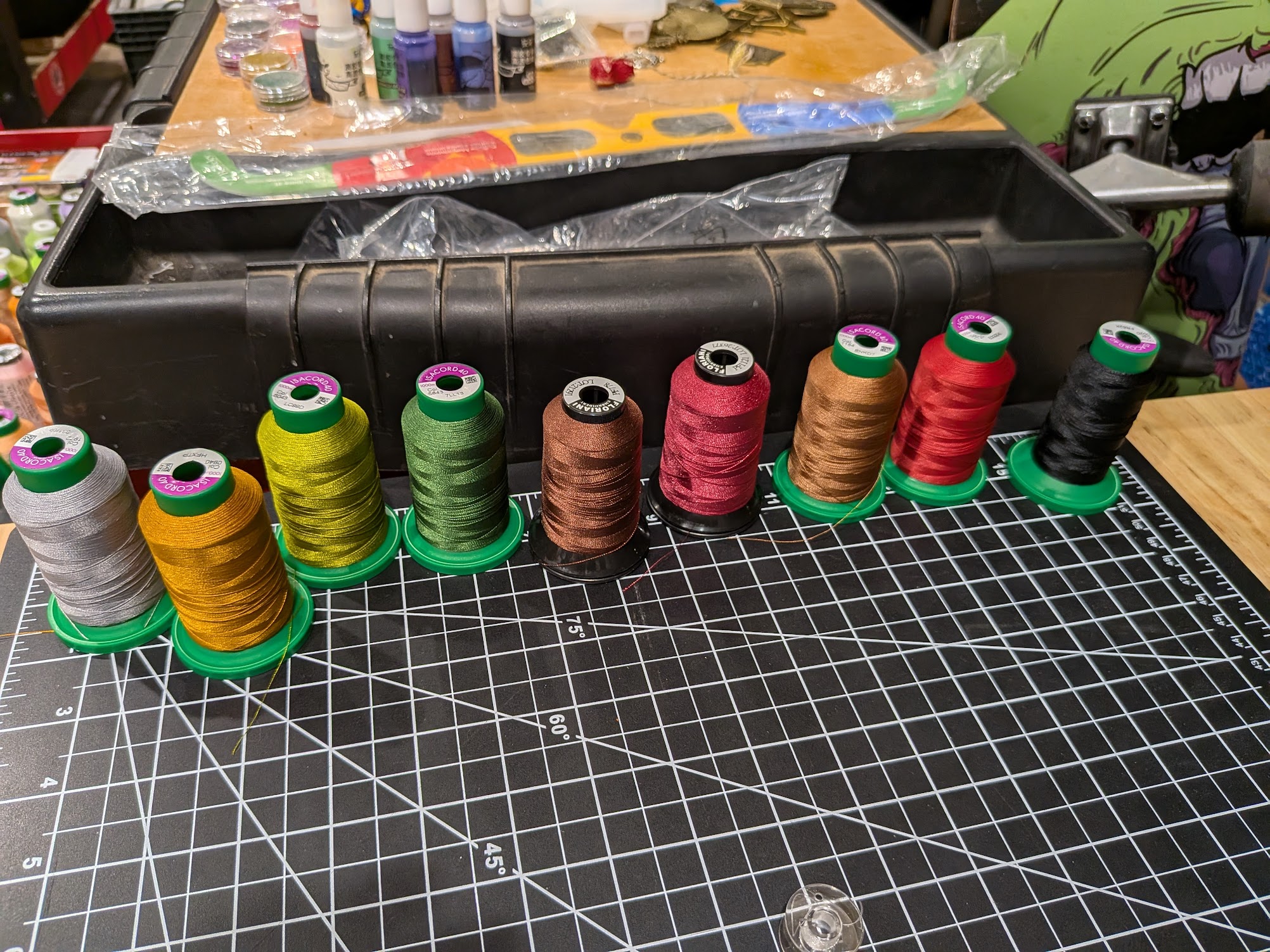 Threads used for Le Chuck.
Threads used for Le Chuck.
Tip: Do not underestimate the task of choosing the right color threads.
7. Embroider it!
And then I just embroidered it. I had to babysit the embroidery process since many things could go wrong.
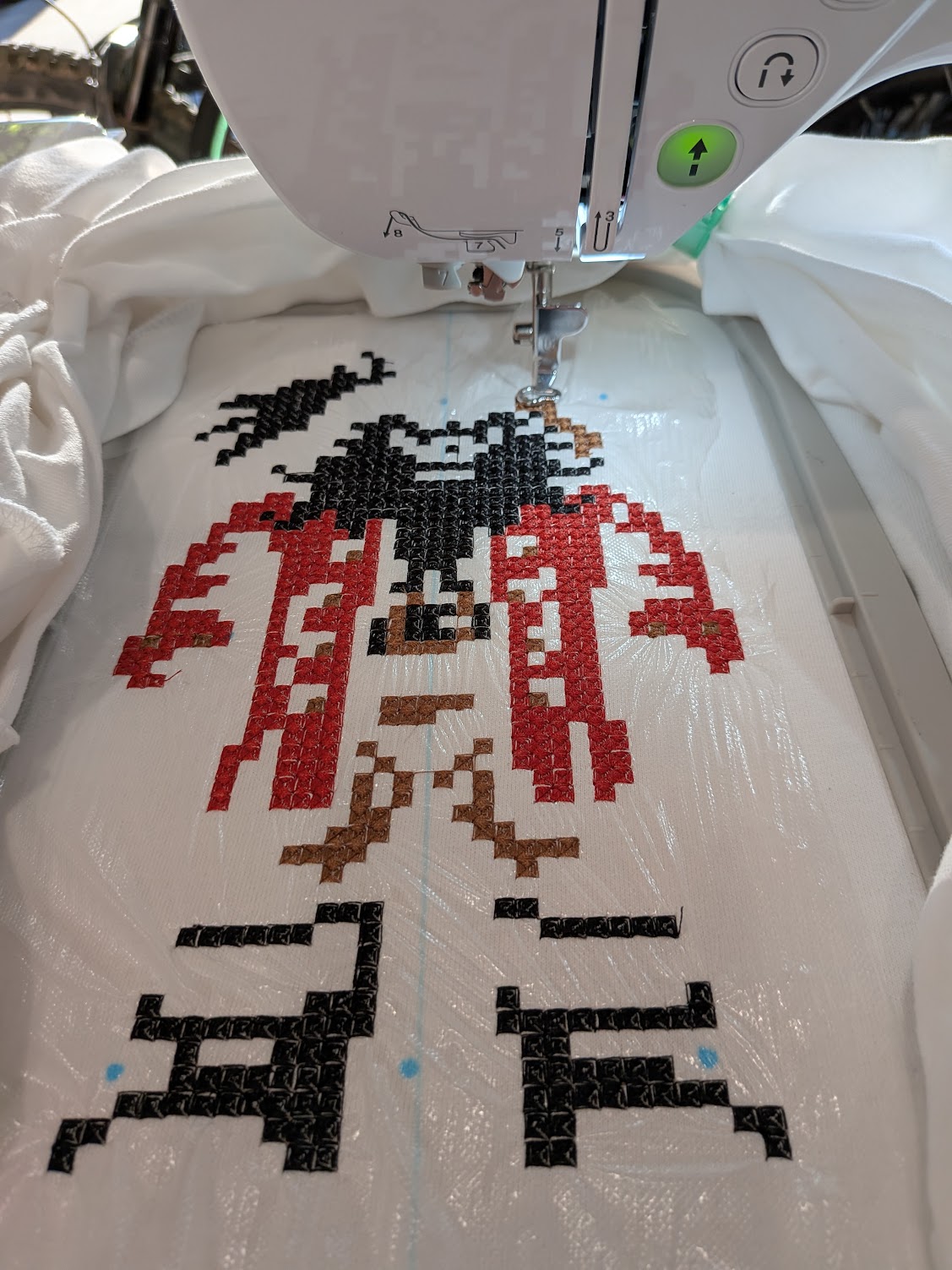
Embroidering Le Chuck in my Brother NQ3550w machine.
8. Trimming stabilizer and threads
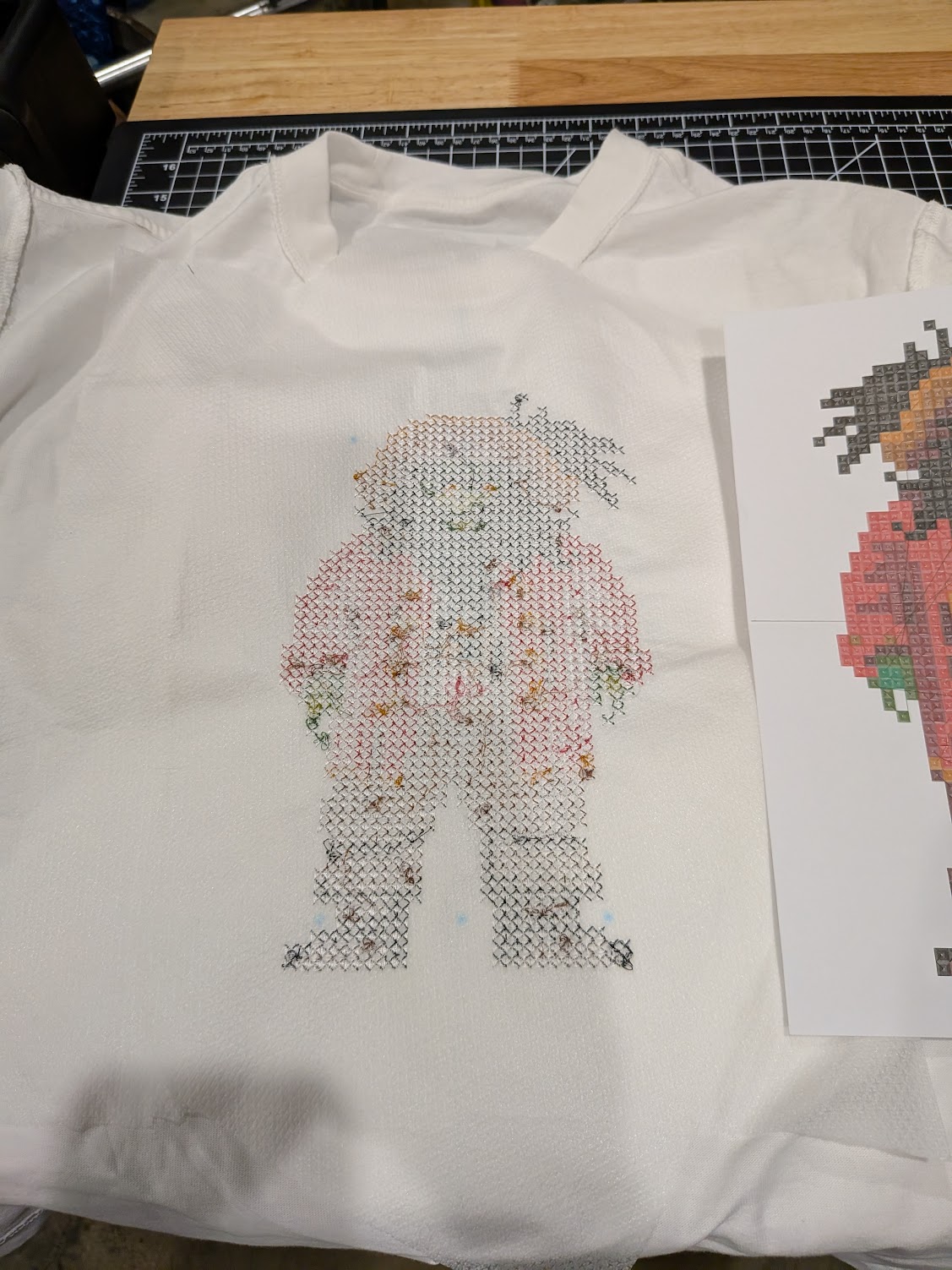
The t-shirt, from the “wrong” side after trimming the stabilizer and threads
Once you finish with the embroidery, there are two remaining tedious tasks:
- Trimming the “extra” stabilizer
- Trimming the threads that are “hanging” usually due to jump stitches
9. Fixing “bugs”
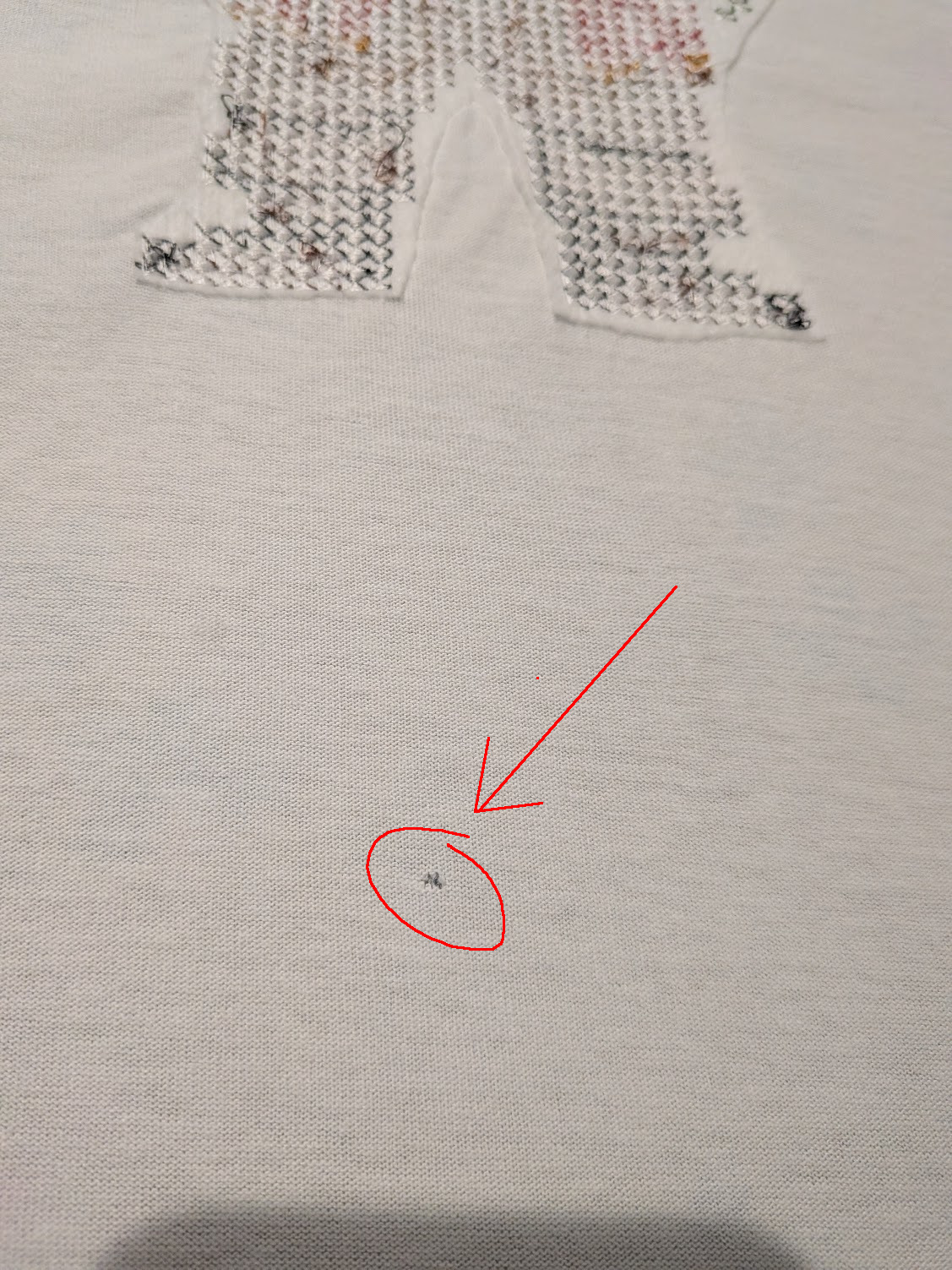
Bug, which I fixed by embroidering a “pixel” on top of it.
Tip: Always put your T-shirt inside a mesh bag before putting it in the washer machine.
As before, I fixed the “bug” by embroidering a “pixel” on top of it.
Success!
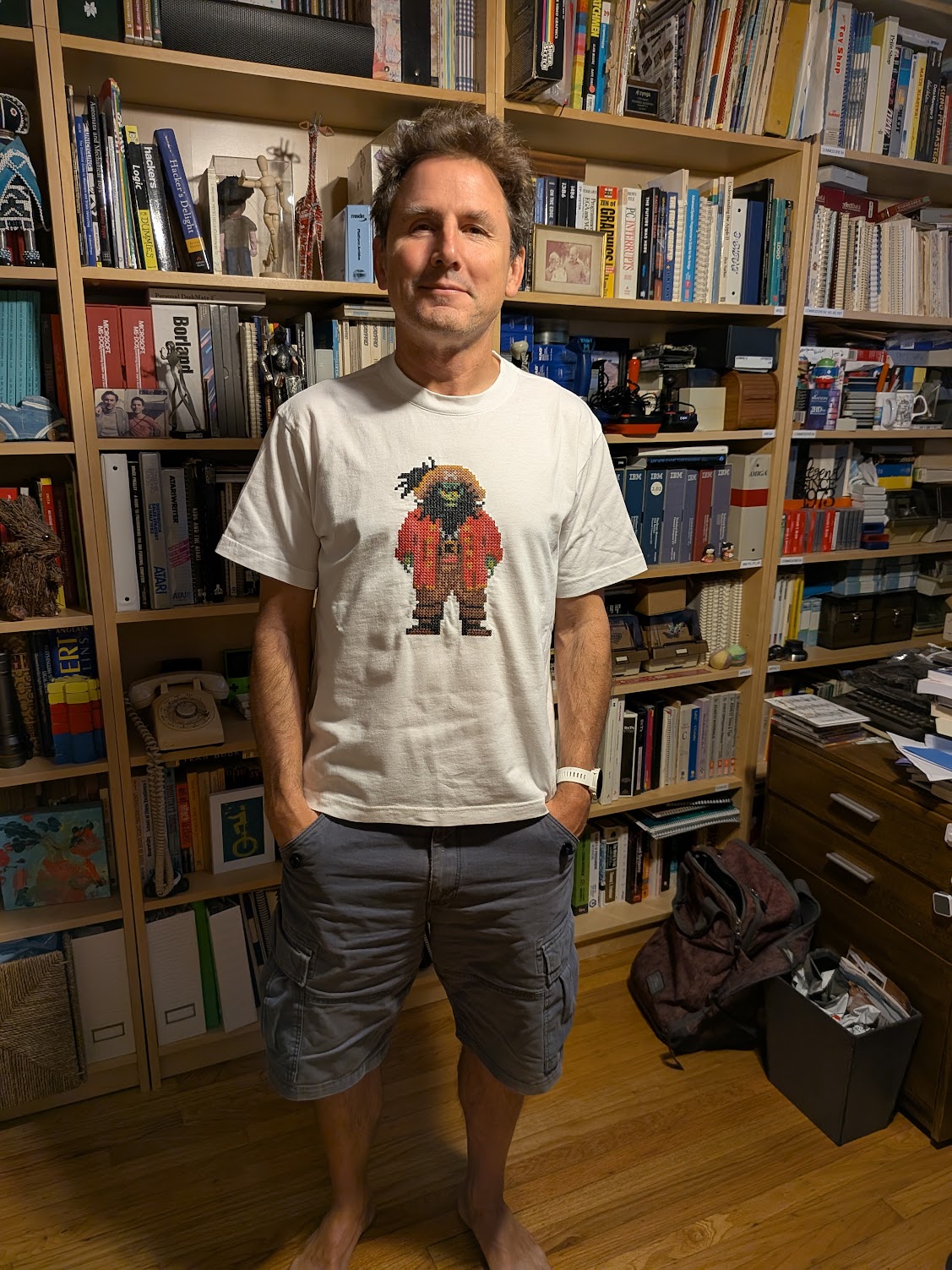
Proudly wearing my newly embroidered t-shirt.
And VCF West was great, as always.
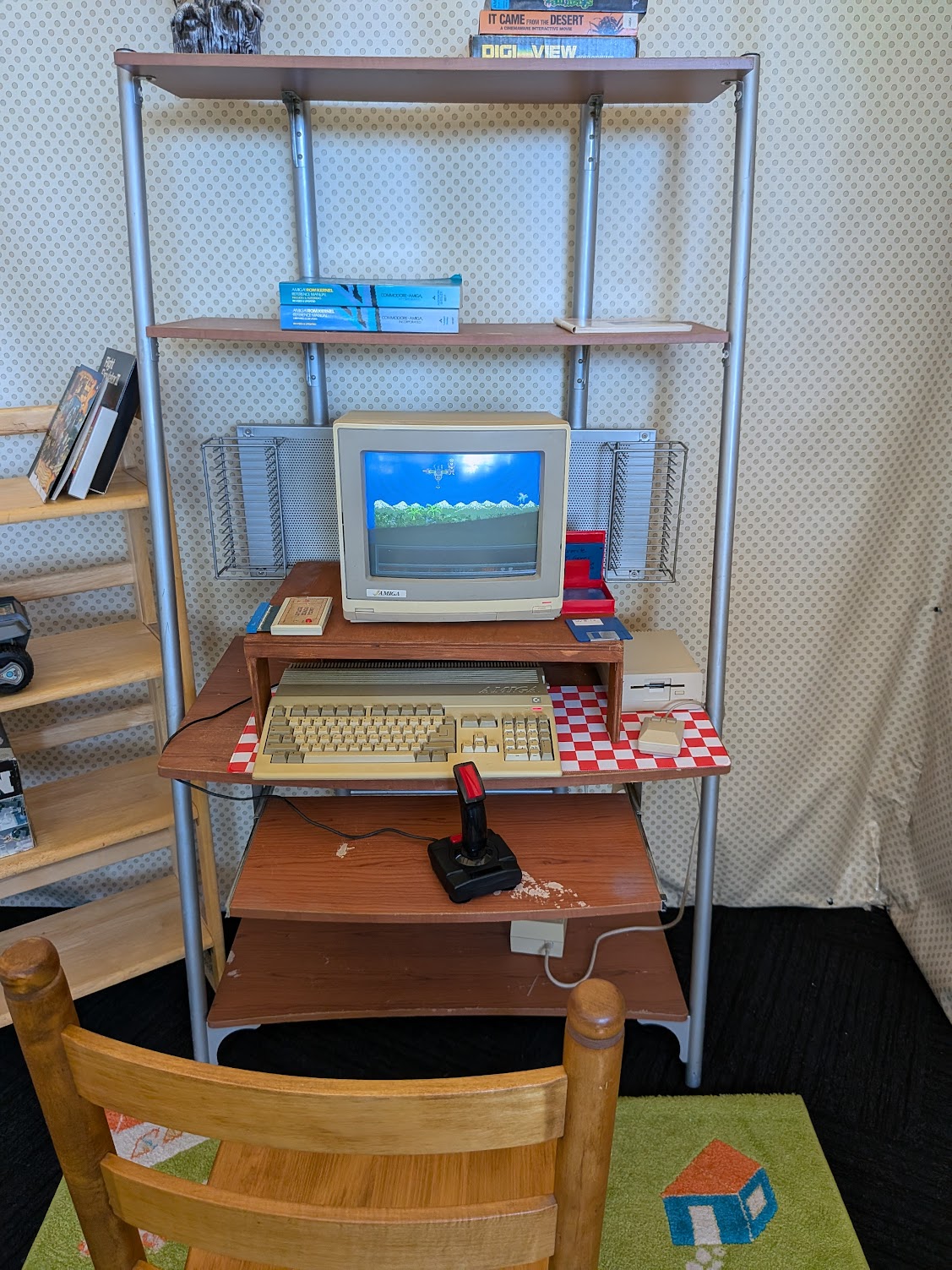
The “My First Amiga” booth at VCF West.
T-shirt stats
- Total Stitches: 50,346
- Unique colors: 9
- Total thread use: 237.3m (top), 118.65m (bobbin)
- Dimensions: 147mm x 247.8mm
This post is 100% AI-free.